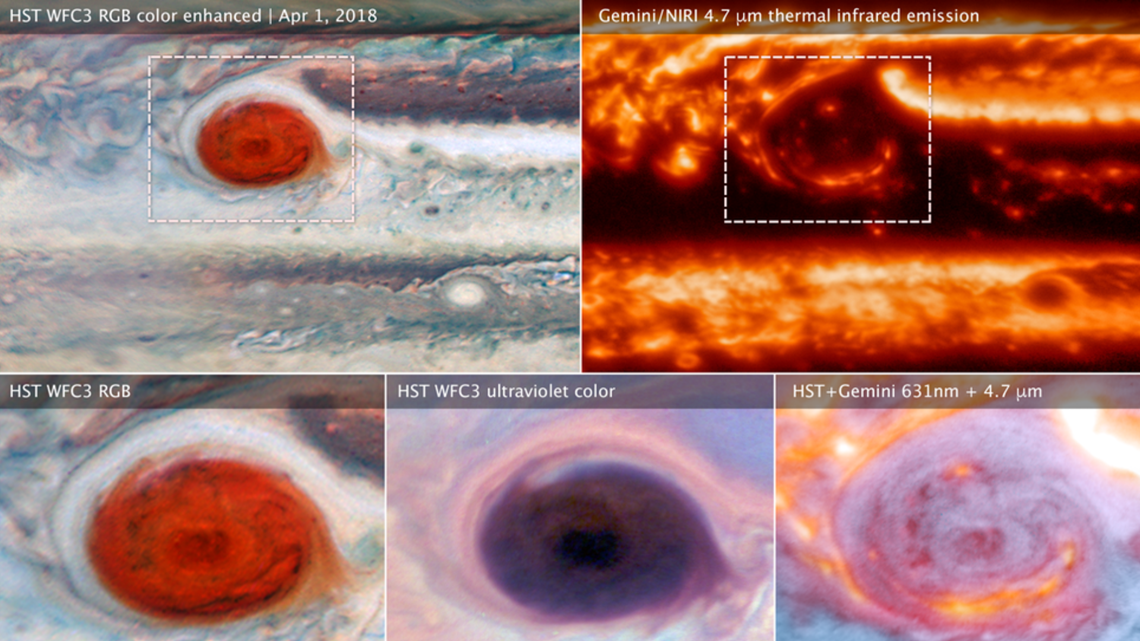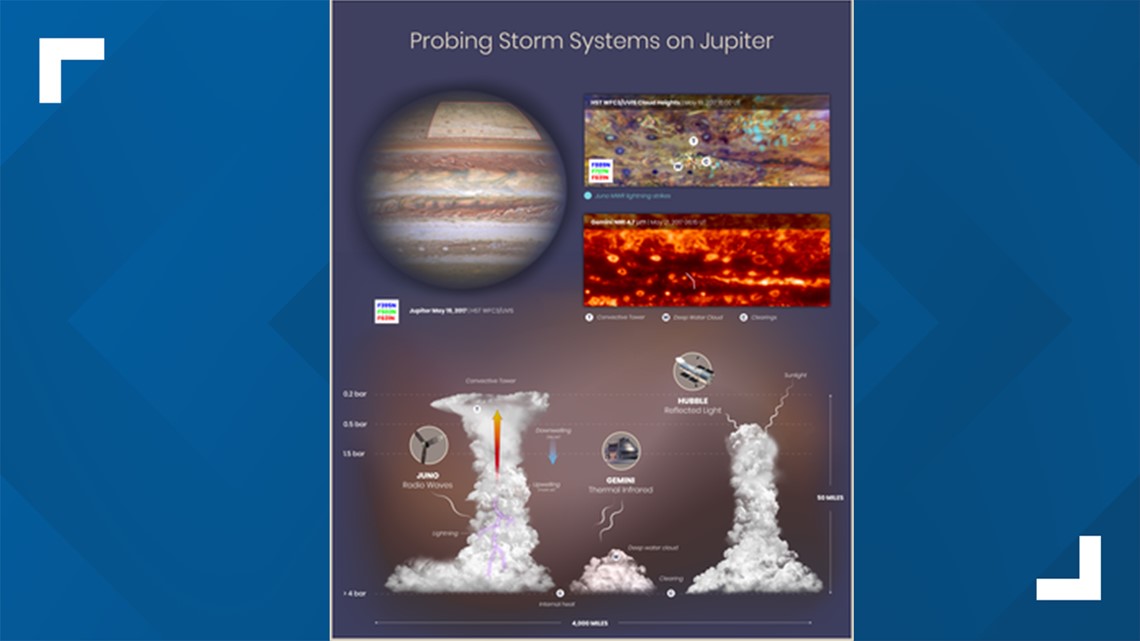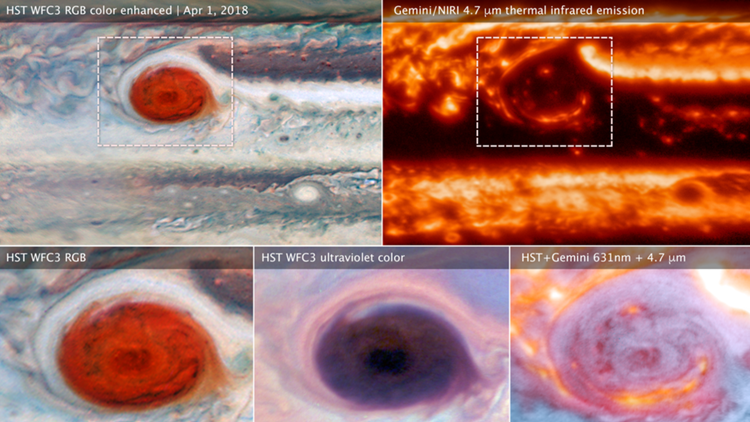WASHINGTON — Scientists have been getting an even better understanding of Jupiter's massive storms with help from the Juno spacecraft, the Hubble Space Telescope and the ground-based Gemini North telescope in Hawaii.
The collective efforts by this team have given researchers new insights into turbulent weather on the planet more than 500 million miles away from Earth, according to NASA.
Hubble and Gemini watch the planet from afar, capturing high-resolution global views of the planet that are key to interpreting Juno's close-up observations. Juno can probe deep into the planet's atmosphere by detecting high-frequency radio waves. The telescopes can then take that information and learn how deep the clouds are over Jupiter.
One of Jupiter's most recognizable features is its Red Spot. It's a massive storm, that according to NASA is twice the size of Earth, and swirls around the planet.
And new photos from Juno show that the Great Red Spot has dark features that appear, disappear and even change color and shape over time within the storm. However, researchers weren't exactly sure if the dark material was caused by something in the clouds or if it was holes in the clouds.
With the ability to compare Hubble's visible-light images to Gemini's thermal infrared images, researchers have learned that they are indeed holes in cloud layers.


"It's kind of like a jack-o-lantern," said Michael Wong at the University of California, Berkeley. "You see bright infrared light coming from cloud-free areas, but where there are clouds, it's really dark in the infrared."
In could-free regions on Jupiter, heat from the planet is emitted in the form of infrared light — otherwise blocked by high-level clouds.
"What's important is that we've managed to collect this huge data set that supports the Juno mission. There are so many applications of the data set that we may not even anticipate. So, we're going to enable other people to do science without that barrier of having to figure out on their own how to process the data," Wong said.
NASA says the storms on Jupiter are "gigantic" compared to Earth's thunderstorms. These storms can reach more than 40 miles with lightning packing a punch with '"flashes that are three times more energetic than Earth's largest 'superblots.'"
Scientists have learned that the lightning on the far off planet is in conjunction with three different cloud structures. These include deep clouds made of water, large convective towers caused by upwelling of moist air and clear regions presumably caused by downwelling of drier air.


Measuring the deepwater clouds on Jupiter gives researchers an idea about how much water is in the atmosphere. This is an insight into how Jupiter and the other gas and ice giants formed. Hopefully, giving researchers a better idea of how the solar system formed.
"Because we now routinely have these high-resolution views from a couple of different observatories and wavelengths, we are learning so much more about Jupiter's weather," said Amy Simon of NASA's Goddard Space Flight Center in Greenbelt, Maryland. "This is our equivalent of a weather satellite. We can finally start looking at weather cycles."


